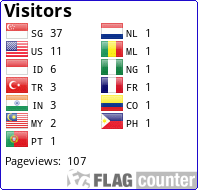Publication Ethics
1. Objectives
This code of ethics is aimed at preventing misconduct in research by providing the essential ethical standards necessary for manuscripts submitted to and published in APJIS and by supplying rules on decisions and procedures for those manuscripts for which suspicions of plagiarism are raised.
2. Definition of Plagiarism
Plagiarism is defined here as an act of using ideas or words from another article that has already been published in a journal or book without proper citation or crediting of its source, thereby, misleading readers to overestimate the academic contribution of an article.
3. Types of Plagiarism
Plagiarism is classified into two types.
a. Simple Plagiarism
Simple plagiarism is an act of borrowing the whole or a part of an original research output, by way of directly copying or superficially paraphrasing an original expression without proper citation, thus giving the misconception that the intellectual property is one's own. It also includes an act of publishing a translation of the whole or a part of an article published in a foreign language without proper citation. It also includes copying a significant part of a source article without using quotation marks even if credit has been given to the source.
b. Self-Plagiarism
Self-plagiarism is an act of presenting the whole or a part of one's own research output that has already been published without citing the original source, thus providing the misconception that the work is new and thereby acquiring double recognition for a single research output.
4. Investigation on Plagiarism and Judgment
a. Once a suspicion of plagiarism is raised on a published or accepted article, the editor-in-chief forms the Research Ethics Special Committee. The primary role of the Research Ethics Special Committee is to judge whether an article has been plagiarized or not. The Committee consists of five to seven members and must include two or more members from outside the editorial board.
b. As the first step, the Research Ethics Special Committee should internally evaluate a suspicion of plagiarism on a published or accepted article within 30 days. Then the Committee should give a rebuttal period of 30 days to the author(s) of the article under suspicion in order to defend his/her/their position before the Committee makes a final decision on the plagiarism by a 2/3 vote of the entire committee members.
c. When a suspicion of plagiarism is raised during a review process, the editor-in-chief should solicit an opinion from an associate editor and the reviewer and then give a rebuttal period of 30 days to the author(s) before judging plagiarism.









